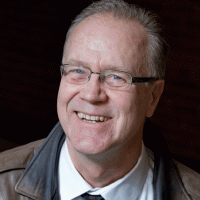
Five Concrete Steps Towards a St. Louis Comeback
In greater St. Louis, decisions of the past created the conditions of the present, which have imbued so many residents with a nihilism about the future. It is a nihilism—a sense that no matter what they do, unseen structural forces will stifle positive change; an exhaustion arising from decades spent as powerless bystanders to policy adoption and implementation affecting their communities; a hopelessness underlined by the horrific image of a teenager mowed down as he raised his hands in surrender—that we must grasp in order to understand what’s happening in St. Louis right now.
Swanstrom and Mollenkopf’s diagnosis of this despair’s underlying causes largely comports with myassessment a week after Michael Brown’s death. They agree that the financial stressors on a hopelessly fractured and increasingly impoverished region have combined with persistent racial inequities in the power structure to create economic, education, transportation, and criminal justice systems that trap many African-Americans in a vicious downward spiral. I outline some of this history underlying these systems in a recent e-book.
But since we seem to agree about the root causes, it seems more fruitful here to focus on potential solutions. In pressing President Obama after the 2008 financial collapse, Rahm Emanuel counseled the president, “Never let a serious crisis go to waste.” In that vein, it may be the right moment to broach solutions to many of the problems that have long plagued the region.
The first and most obvious policy solution is municipal and regional consolidation. There are currently 90 municipalities in the region, but 10 would be more appropriate, along with a larger St. Louis City. Consolidation with other St. Louis County municipalities could help cities like Ferguson reinvest in themselves. Through consolidation, strapped communities could avoid using such a high percentage of their resources for expensive public-safety overhead and obtain more favorable borrowing rates as a larger size and tax base could reassure potential lenders. Consolidation could also help African Americans compete for a bigger share of the municipal pie and incrementally gain power as larger municipalities increase the importance of broad coalitions and alliances. Finally, consolidation could increase the political talent pool.
In shrinking cities, politics is often a nasty, zero-sum game. But consolidation could create economies of scale, increase borrowing capacity to expand economic opportunity, reduce economic pressures that inflame racial tension, and smash up the old boys’ network that has long ruled much of North County. Although consolidation, especially any combination with the City of St. Louis, may be a tough sell to voters in an extremely parochial region, a recent series of reports highlighting the inefficiencies of municipal fragmentation, along with a steady stream of news about Ferguson’s incompetence has shined a light on the impracticality of having 59 police departments in a single county. Now may be the best opportunity in decades to make meaningful progress on merging municipal services and, eventually, entire towns.
Consolidation must occur on several fronts—in the municipalities and St. Louis City. The 90 St. Louis County municipalities should become 10. A re-assimilated St. Louis City – which seceded from St. Louis County in 1876 – should be number 11, although any type of combination with the city may be a tough sell to voters in an extremely parochial region. However, a recent series of reports highlighting the inefficiencies of municipal fragmentation, along with a steady stream of news about Ferguson’s incompetence has shined a light on the impracticality of having 59 police departments in a single county. Now may be the best opportunity in decades to make meaningful progress on merging municipal services and, eventually, entire towns. Reformers must ensure that residents concerned about losing proximity to service providers connect their towns’ financial stress to massive service duplication, and that residents grasp the potential to end the hyper-policing that has caused the frustration (and incarceration) of so many citizens.
A second set of solutions involves law enforcement. The region must overhaul a municipal police and court system that preys on the poor. While the 90 municipalities in St. Louis County make up 11 percent of the state’s population, the courts from those municipalities bring in a whopping 34 percent of all municipal court revenue statewide. Twenty of the 21 cities in the county that derive at least 20 percent of their revenue from courts are in areas that are predominantly African American. It was difficult enough for black St. Louisans to accumulate intergenerational wealth for the past two centuries because of slavery, Jim Crow, forced residential segregation and disinvestment, price gouging, and restricted employment opportunities. To continue systematically extracting scarce wealth from struggling black citizens largely in order to preserve salaried public-sector jobs for predominantly white employees is unconscionable, and it must change. Recent state legislation reduced the maximum percentage of overall municipal revenue derived from courts to 30 percent from 35 percent; that number should be further reduced to 10 percent, per legislation pre-filed by Missouri State Senator Eric Schmitt. This should substantially reduce the pressure on police to cite struggling residents for petty offenses. Also, forgiveness should be offered those who have outstanding warrants for petty offenses; St. Louis City has already taken the lead in doing this by forgiving more than 220,000 warrants, and hopefully municipalities throughout North County will follow their example.[1]
Moreover, a police force that looks like the community it serves will be much better able to reestablish trust with residents and implement any policy changes. The fact that public-sector workers aren’t required to live within town limits significantly worsens the problem and fuels community resentment; residents see police, prosecutors, and judges as mercenaries brought in to harass them. Adding insult to injury, all of these law-enforcement officials—as well as the town clerks and assessors that literally take their money after a court judgment—are paid with the fruits of that harassment. When a Ferguson policeman was caught on tape during one of the protest’s first nights referring to the protesters as “fucking animals,” it exemplified the fact that many white North County police live far away from the jurisdictions they patrol and see themselves as having little in common with residents of the communities they are supposed to protect. Blacks in North County, while not as poor, on balance, as blacks in North City, almost completely lack political autonomy within many jurisdictions despite compromising majorities of the population. There are preliminary efforts afoot—both by policymakers and philanthropists—to ensure a broader pool of minority applicants for St. Louis County municipal police forces. If these efforts are to have the desired effect, they must create sustainable pipelines through which young black citizens can become policemen—as well as prosecutors and judges. Only then will law enforcement treat subjects as they would their own neighbors, and only then will the system be broadly seen as legitimate by those ensnared in it.
A third key component of any long-term solution to the problems plaguing North St. Louis County is simple: jobs. Estimates of unemployment among young area males vary, but some are as high as 50 percent. As long as most North County youth graduate from subpar high schools—or, all too often, fail to graduate—they will lack desirable job skills and the social networks that lead to employment.
To help address this, every major St. Louis company—but especially those based in and around Ferguson, including global multinationals such as Boeing, Express Scripts, and Emerson Electric, which sport market capitalizations ranging from $50-$100 billion—should immediately hire at least 100 young people from North County in entry- or midlevel positions, and work to create broader employment pipelines for local youth. Several area companies have over 100,000 employees worldwide; they can easily find room for another 100 who live within walking distance of their world headquarters.
Emerson Electric has provided a model for local firms by creating a multimillion-dollar program called Ferguson Forward, a wide-ranging education and employment program to support the community with four focus areas: early childhood education, youth jobs, scholarships for college as well as for technical and trade careers, and business-development training. Emerson is partnering with local institutions to develop an early childhood learning resource center to support area preschool programs; supply 100 jobs for area youth; fund scholarship opportunities for training in business and Science, Technology, Engineering, and Math (STEM) disciplines as well as technical and trade jobs; provide peer mentors and tutors for students; endow scholarships to prestigious Cardinal Ritter Academy, a highly regarded all-black private high school with a near 100 percent college-attendance rate; and provide assistance to local small businesses in accounting, finance, legal, logistics, IT, HR, and marketing. These areas are critical to achieving long-term economic inclusion for black St. Louisans, and politicians should shame other local firms into following Emerson’s lead.
A fourth solution involves public education. The St. Louis region has some of the finest public schools in the state and some of the worst, and the former must do more to help the latter. The ongoing tragedy of the transfer crisis at the unaccredited Normandy and Riverview Gardens districts – in which suburban superintendents have sought to avoid accepting transfer students from the struggling districts – makes that abundantly clear. There are examples of excellence and dramatic academic improvement among some of the region’s poorest students, such as Cardinal Ritter Preparatory Academy, the KIPP charter schools, and some schools in the Jennings district, which a small minority of Ferguson children attend.[2] We must find the resources and talent to replicate these successes, not just in Ferguson-Florissant but in the Normandy, Riverview Gardens, and St. Louis Public Schools as well. Until we do, students in unaccredited districts must have the option to matriculate at the school district of their choice, over the vehement objection of many county parents, school boards, and superintendents. Just fifteen years ago, the St. Louis region had the nation’s largest voluntary inter-district school busing program and there is no reason why the region cannot resurrect a similar transfer program, given the original program’s success in increasing the percentage of black students to attend college. If everything else suggested here is accomplished but the education of the region’s black youth does not improve, any broader progress will be ephemeral.
Last but not least comes politics. One obvious way for North County black residents to wield more influence over the policy decisions that structure their lives is, of course, to vote. As long as whites continue voting at much higher rates in municipal elections—nearly four times the rate of blacks in Ferguson—disparities will continue. That means a concerted effort to register young voters, since the overwhelming majority of 18- to 29-year-olds in Ferguson are black, is a critical first step, which must go hand-in-hand with civic education efforts to demonstrate the importance of engagement.
Activists should also seek to change electoral rules. First, they should seek to move municipal elections to the November general election day, instead of the current separate spring municipal elections, when poorer citizens are less likely to vote. Second, they should work to reform state laws prohibiting recent ex-offenders from voting, which disproportionately affect North County blacks, and to eliminate other obstacles ex-offenders face in voting, such as local registrars power to require documentation from parole officers before reinstating ex-offenders. Finally, they should work to pass statewide same-day voter registration, which has been linked with higher turnout, especially among younger voters.
None of these proposed solutions is a panacea. But taken together, they have a real chance to begin to heal a region whose wounds are centuries in the making.
[1] Nicholas J.C. Pistor, “St. Louis to Forgive About 220,000 Warrants for Nonviolent Municipal Offenses,” St. Louis Post-Dispatch, October 1, 2014.
[2] Elisa Crouch, “Jennings Schools Show Improvement Even as Neighboring Districts Struggle,” St. Louis Post-Dispatch, September 22, 2013.







